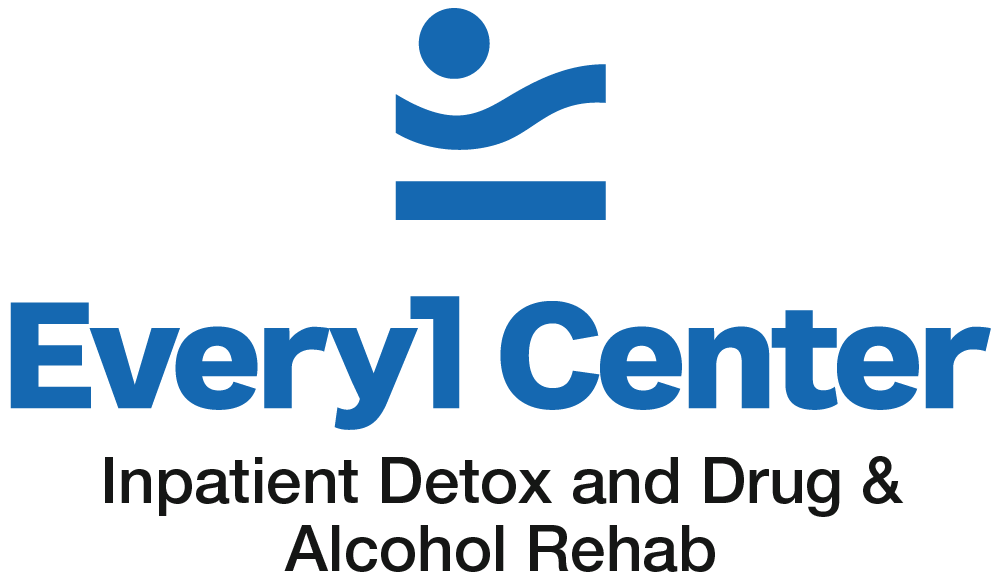Every1 Center Troy, NY: Inpatient Detox & Long-Term Drug/Alcohol Rehab
Long Term Drug Rehab
Research on long-term drug rehab tells us that positive treatment outcomes are associated with adequate levels of care. Long-term drug rehab, also called long-term residential treatment, can be helpful for anyone who needs extended care to develop and maintain a clean and sober lifestyle.

What Is Long-Term Drug Rehab?
Long-term care typically involves a stay of at least 90 days in a highly structured residential treatment facility. The length of stay is determined by the treatment team and the needs of the client. Residential care can last anywhere from three months to two years.
Extended residential treatment offers clients an opportunity to identify and treat underlying issues that energize the behavior patterns of active addiction. Those core issues typically emerge after detox and withdrawal have been completed.
Who Should Consider Long Term Care
Here are some of the reasons why you might undergo long term care:
- Recent relapse
- Long-standing misuse of substances
- A co-occurring mental health disorder
- Needing in-depth treatment for stubborn, long-standing, and destructive behavior patterns
- Outpatient programs provide insufficient structure or support
- Increasing use of drugs or alcohol over time
- Spending all day finding, getting, and using drugs
- Cravings you can’t control, especially in certain situations
- Obsession with drugs interferes with work, school, and family responsibilities
- Avoiding recreational activities you once enjoyed
- Continuing to use even when it’s dangerous, has serious repercussions or causes a physical or mental health condition
- Withdrawal symptoms that lead to relapse when you reduce your intake or stop using
Does Long Term Care Include a Relapse Prevention Program?
A focus on relapse prevention has developed over the last several years. Relapse prevention programs help clients to recognize situations that put them at risk for relapse.
Avoiding these situations or developing the ability to respond to them in a healthy way can reduce the incidence of relapse overall.
The most common relapse triggers for many are people, places, things, moods, and direct contact with drugs. Recovering people learn to remove themselves from these situations as quickly as possible. They also learn effective coping techniques to use when escape is not possible.
What causes relapse?
According to the National Institute on Drug Abuse (NIDA), relapse rates for those with a substance use disorder (SUD) are between 40 and 70 percent. Because these findings are consistent across the board, relapse is increasingly seen as a normal part of the recovery process.
What constitutes a relapse
When people experience the pleasurable effects of certain substances, that activity is hard-wired into the brain and repeated thousands of times. That’s why recovering from a drug or alcohol addiction is such a challenge.

Because the likelihood of repeating the behavior is very high, the desire to resist it must be planted, nurtured, developed, nourished, and strengthened on a daily basis.
That can be accomplished by going to 12-Step meetings, attending counseling sessions, participating in group therapy, calling someone before you take a drink, or just hanging out with a few recovering friends.
If you are addicted to a substance, it means that your body, mind, and emotions need that substance just to feel normal. Even after being sober for years, recovering individuals report that cravings still come and go.
When an individual succumbs to cravings after they have been sober or in rehab, we call it a relapse. Anyone with a history of SUD is at risk. Relapse can come out of nowhere with little or no warning and for no discernible reason.
Relapse is defined as the deterioration of a clinical condition that had previously been improving. Relapse is most likely to occur early in the recovery process or when clients abandon their ongoing care plans.
Rather than viewing relapse as a personal failure, the National Institute on Drug Abuse (NIDA) tells us that “substance use disorders should be treated like any other chronic illness. Relapse serves as a sign for resumed, modified, or new treatment.”
Relapse should always be addressed immediately. Examining the issue in depth can help you to understand why it happened and how to prevent it in the future.
Measures to address a relapse can include resuming long-term care, revising your treatment protocol, or implementing a new treatment plan altogether.
What are slips and lapses?
Many treatment professionals distinguish between slips, lapses, and relapses. A slip might involve a single, spontaneous drink followed by a return to treatment.
A lapse might include a very brief digression into using followed by a speedy return to treatment. Relapses are more complicated and more focused, and they last longer than slips and lapses.
All of these events should be addressed immediately. Relapses are especially likely when a client stops following a customized recovery plan.
In AA, relapse is an indication that the person needs to rework the 12 Steps. There is an abundance of evidence-based research and scientific support for the therapeutic effectiveness of the 12 Steps.
The Role of Emotional Healing in Long Term Drug Rehab
Emotions can be very persuasive, but that doesn’t mean they tell the truth. In many cases, drugs and alcohol are used to keep painful feelings hidden deeply away beneath layers of superficial psychic garbage.
During long-term care when clients are newly sober, these emotions can come crashing to the surface of conscious awareness, and they can be very difficult to process.
When you start to identify and accept your feelings, they can be brought to light, examined, discussed, released, and reframed in a healthier context.
As positive as that sounds, it can be very painful to confront your feelings and share your innermost thoughts with a group of people.

Nevertheless, high levels of support and acceptance from those in your group can make it all worthwhile and bring about substantial healing for everyone involved.
Here are some feelings you might experience in long term rehab:
- Stress
- Persistent irritability
- Depression
- Boredom
- Anxiety
- Anger
- Extreme mood swings
- Emotional outbursts
- Fatigue
Your emotions will tell you that the pain you feel will never end. Your feelings will urge you to get some drugs, get high and forget about rehab. These feelings are very common in early recovery.
What Are Co-occurring Disorders?
Co-occurring disorders are conditions that frequently appear together. Roughly 50 percent of those with a SUD also develop a mental health condition. Those with a mental health condition often develop a SUD.
Nevertheless, researchers caution that one disorder does not cause another disorder. Rather, the two disorders coexist. No one is sure which condition came first.
Investigators report that people with mental health conditions frequently develop a SUD to help them cope with a preexisting mental health condition.
Brain changes in those with mental health disorders can increase the pleasurable effects of substances, thereby reducing the desire to quit.
Increased intake of substances can stimulate changes in the structure and function of the brain. That increases the odds that someone with a SUD will at some time develop a mental health disorder.
Co-occurring disorders are usually treated separately.
Addictions Treated in Long Term Care
Long-term rehabs treat individuals with a variety of addictions. Here are the most common SUDs for which individuals seek help:
- Alcohol
- Heroin and morphine
- Synthetic opioid painkillers
- Cocaine and crack
- Methamphetamine
A Typical Day in Residential Long Term Care
The goal of long-term care is to help you form new habits that automatically support a healthy lifestyle.
An early breakfast is followed by meetings or classes. Group therapy sessions are next. Conducted by an experienced treatment professional, group therapy focuses on recovery-related issues that everyone can identify with.

An important part of long-term care is learning to identify situations that make you want to use. In the safety of a controlled therapeutic environment, you can explore your addictive behavior patterns and bring them out into the open.
Over time, you can even learn to neutralize the way you respond to triggers that previously activated self-destructive behavior patterns.
After lunch, clients participate in a series of intensive therapeutic interventions that may include these activities:
One-on-one Cognitive-behavioral therapy (CBT)
CBT is one of the most effective addiction treatments available. It helps you to change the way you perceive life, and that affects the way you respond to different types of stimuli.
Your therapist will help you identify triggers and other high-risk situations in your life that could bring about a relapse. Therapy can help you develop strong and effective coping mechanisms that can keep you sober after discharge.
Group Therapy
Participants form fast and furious connections with each other. Everyone has experienced first-hand what the nightmare of addiction is all about.
Sharing stories with others helps to build solidarity and fellowship. It fosters a spirit of trust and healing. The more trust among participants, the more open they become and the greater the degree of healing that can occur.
Additional Therapeutic Activities
Supplementary sessions are available in many long term facilities and may include the types of sessions described below:
- Art therapy
- Anger management
- Yoga
- Family therapy
- Meditation and spirituality
- Music therapy
- Grief counseling
- Stress reduction techniques
- Psychodrama
- Equine therapy
- Exercise programs
- Biofeedback
- Neurofeedback
Most programs also include a few hours of free time in the afternoon. How you spend that time is up to you. Recreational activities might include ping-pong, pool tables, soccer, basketball, and volleyball.
Evenings are reserved for 12-Step meetings. However, some facilities offer short sessions immediately after dinner. Early bedtime is recommended for optimal performance the following day.
What About Detox
Detox is a necessary first step in the recovery process. As addictive substances exit the body, you may experience temporary but intensely unpleasant and uncomfortable feelings, sensations, and cravings.
Your doctor will prescribe medications to assist with the discomfort. During this time, you are encouraged to rest and focus on the healing process without participating in other treatment activities quite yet.
After detox, your treatment team will evaluate your case and formulate a plan of action that will best serve your needs.
What is the Cost of Long Term Care?
Insurance can cover most of the expenses related to long-term residential care. Some rehabs provide financing, scholarships, or even grants.
You can find treatment centers close to home or not so close. Many clients take advantage of the opportunity to get away for a while. If you choose a facility in a warm-weather zone, it can almost feel like going on vacation.
The more upscale the facility, the longer you stay, and the farther it is from home, the more your treatment will probably cost.
You might not know the duration of your stay until your treatment team evaluates you upon arrival. Every effort is made to ensure that you receive customized care at a recommended level that is in line with your financial situation.
Your treatment team may decide that a combination of therapy and medication would be a more effective treatment than either medication or therapy alone.
This approach treats the body as well as the mind. However, It can cost more since it requires someone on staff to manage the medications.
The treatment team at Every1 Center in New York is at your service around the clock. Call us if you have any questions about what to expect from a long term rehab.
Sources
- National Institute on Drug Abuse. (2018). Principles of Effective Treatment.
- World Health Organization. (2009). Clinical Guidelines for Withdrawal Management and Treatment of Drug Dependence in Closed Settings.
- National Institute on Drug Abuse. (2018). Treatment and Recovery.
- 7 Common Questions About Twelve Step Recovery Programs.
- Alcoholics Anonymous Most Effective Path To Alcohol Abstinence.
- How To Deal With Withdrawal Symptoms.
- 12-Step Interventions and Mutual Support Programs for Substance Use Disorders: An Overview.
